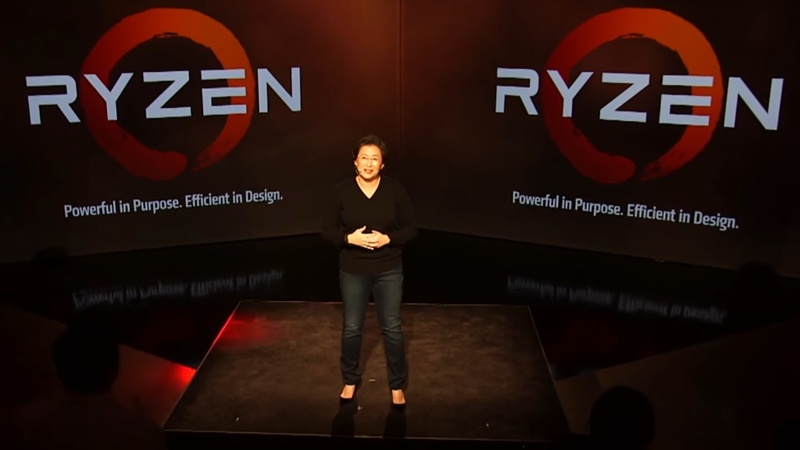AMD has been teasing its latest Zen family of processors for sometime now and during the New Horizon’s livestream held yesterday, we finally have some tangible details about the CPU.
The first is that its name isn’t Zen, its Ryzen (pronounced Rye-zen). “As we bring Zen to the market, we want people not just to think about the performance and the efficiency and the innovation but we also want people to think about Zen taking computing to the next horizon,” AMD chief executive officer, Dr Lisa Su said.
Of course, nobody that wanted to know about Zen cares much about what AMD has named its new child, we want specs and we got exactly that.
The Ryzen range is taking aim at the desktop market, to be specific the PC gaming desktop market, “because we know you love PC games,” Su said.
As we’ve known for sometime the Ryzen processor is an eight core, 16 thread design with simultaneous multi-threading. What we didn’t know was frequency and Su revealed that at launch, all Ryzen processors will have a base frequency of 3.4GHz or higher. Boost frequencies will only be announced at launch.
The Ryzen family will run on the new AM4 platform which will allow users to do everything from building huge machines designed for overclocking to smaller more efficient machines for office work.
Overclocking, without the risk
Ryzen has five new technologies driving it which AMD calls SenseMI Technology. The first of these is Pure Power which monitors temperature, speed and voltage in real-time and scales the power usage in real time. If you are abusing the CPU it will draw more power, if you aren’t it will draw less.
Working in tandem with Pure Power is Precision Boost. This gives the CPU the ability to adjust it’s frequency without sacrificing performance. What’s most interesting is that clock adjustments are made in 25MHz steps rather than the 100MHz steps we’ve seen from Intel and AMD in the past.
You might be wondering how the CPU is able to make all these decisions and AMD has the answer, Extended Frequency Range. This technology allows the CPU to ramp up frequencies beyond what Precision Boost allows depending on the cooling solution being used.
The long and short of this is that Ryzen has the potential to “overclock” itself with no input from the user and at the same time give overclocking fanatics greater control.
Smarter and smarter
The final two SenseMI technologies are clever, and that’s not us being descriptive. Neural Net Prediction will build a model of the decisions it makes regarding software instructions. Over time this will start to preload instructions and predict which is the best path to execute them on within the CPU.
This works hand in hand with Smart Prefetch which uses algorithms to learn how programmes and applications access data. This is then used to pre-fetch data and store it in the local cache until it is ready for use.
But is it as good as Intel?
The obvious question is how does Ryzen compare with Intel. Team Red showed off a Handbrake video transcode test which saw Ryzen competing with an Intel i7-6900K Broadwell-E based processor and the result is close, the CPUs completed the benchmark at roughly the same time.
While that is impressive for AMD, Intel hasn’t shown off much regarding its desktop solutions for the Kaby Lake family so it will be interesting to see how the two compare. The fact that Ryzen is competing with Intel’s enthusiast grade CPU however, is very promising.

AMD rising?
This does all seem very promising but it helps to remember that no CEO is going to stand in front of the world and say, “this CPU is terrible, don’t buy it.”
What AMD has shown however is that it has a clear vision of where it wants Ryzen to go and more importantly what the CPU is capable of.
The previously reported Q1 of 2017 release window for Ryzen still stands and Kaby Lake’s desktop solutions are expected to be revealed at around the same time. Pricing and the exact date of availability are yet to be announced but something tells us choosing between Intel and AMD won’t be as clear cut as it has been in the past.

